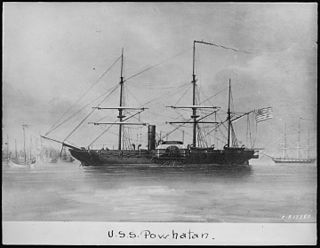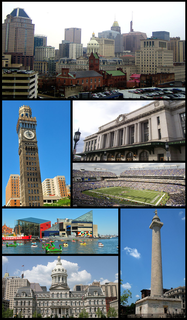
Matthew Calbraith Perry was a Commodore of the United States Navy who commanded ships in several wars, including the War of 1812 and the Mexican–American War (1846–48). He played a leading role in the opening of Japan to the West with the Convention of Kanagawa in 1854.
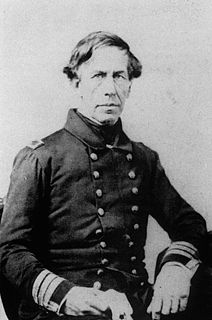
Charles Wilkes was an American naval officer, ship's captain, and explorer. He led the United States Exploring Expedition, 1838-1842 and commanded the ship in the Trent Affair during the American Civil War (1861–1865), where he attacked a Royal Mail Ship, almost leading to war between the US and the UK. His behavior led to two convictions by court-martial, one stemming from the massacre of almost 80 Fijians on Malolo in 1840.
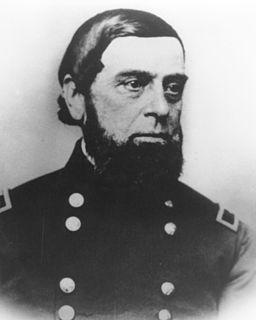
Jacob Zeilin was the United States Marine Corps' first non-brevet flag officer. He served as the seventh commandant of the United States Marine Corps, from 1864 to 1876.

Franklin Buchanan was an officer in the United States Navy who became the only full admiral in the Confederate Navy during the American Civil War. He also commanded the ironclad CSS Virginia.

John Rodgers was an admiral in the United States Navy. He began his naval career as a commander in the American Civil War and during his Postbellum service became an admiral.

Henry Haywood Bell was an admiral in the United States Navy. In the American Civil War, he took part in the liberation of New Orleans and the lower Mississippi. Later he was sent to the Far East to command the East India Squadron. In summer 1867, he led a punitive expedition to avenge the Rover incident, where American sailors had been killed by Taiwanese aborigines. In January of the next year, while trying to force the Japanese to accept trade concessions, he drowned when his boat overturned in bad weather.

Charles Williamson Flusser was an officer in the United States Navy during the American Civil War.

Commodore William Nicholson Jeffers was a U.S. Navy officer of the 19th century. He took part in combat operations during the Mexican–American War and the American Civil War, and during the 1870s and early 1880s served as Chief of the Bureau of Ordnance.

The East India Squadron, or East Indies Squadron, was a squadron of American ships which existed in the nineteenth century, it focused on protecting American interests in the Far East while the Pacific Squadron concentrated on the western coasts of the Americas and in the South Pacific Ocean. Part of the duties of this squadron was serving with the Yangtze River Patrol in China. The East India Squadron was established in 1835 and existed until it became part of the Asiatic Squadron in 1868.
USS King Philip (1845) was a steamer acquired by the United States Navy during the American Civil War. She was used by the Union Navy as a dispatch boat, providing various services.
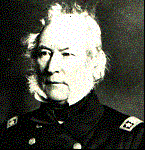
George Campbell Read was a United States Naval Officer who served on Old Ironsides during the War of 1812 and commanded vessels in actions off the Barbary Coast and India. Read eventually rose to the rank of rear admiral.

Cadwalader Ringgold was an officer in the United States Navy who served in the United States Exploring Expedition, later headed an expedition to the Northwest and, after initially retiring, returned to service during the Civil War.

Rear Admiral Henry Kuhn Hoff was a United States Navy officer. During his long career, he took part in combat in Sumatra and in the American Civil War.

Commodore John R. Goldsborough was an officer in the United States Navy. Goldsborough was made a cadet-midshipman in 1824 and as such saw action in the Mediterranean against pirates. In one incident, while in charge of 18 men he attacked and captured a Greek pirate ship with a 58 man crew.

Rear Admiral Frederick W. Rodgers was an officer in the United States Navy. He fought in the American Civil War and rose to be the last commander of the Asiatic Squadron. He was a grandson of U.S. Navy Commodore Matthew C. Perry.
Commodore Jonathan Young was an officer in the United States Navy. He participated in anti-piracy actions and the African Slave Trade Patrol, fought in the Mexican War, Puget Sound War, and American Civil War, and served briefly as commander of the Asiatic Squadron.

Captain Robert F. R. Lewis was an officer in the United States Navy. He participated in the Paraguay Expedition, fought in the Mexican War and American Civil War, and served briefly as commander of the Asiatic Squadron.

Rear Admiral George H. Cooper was an officer in the United States Navy. During his long naval career, he served on the African Slave Trade Patrol, and fought in the Second Seminole War, the Mexican War, the American Civil War, and the Korean Expedition, and rose to command of the North Atlantic Squadron.

John Cummings Howell was an officer in the United States Navy during the American Civil War. He rose to the rank of rear admiral and late in his career was commander-in-chief of the North Atlantic Squadron and then of the European Squadron.






